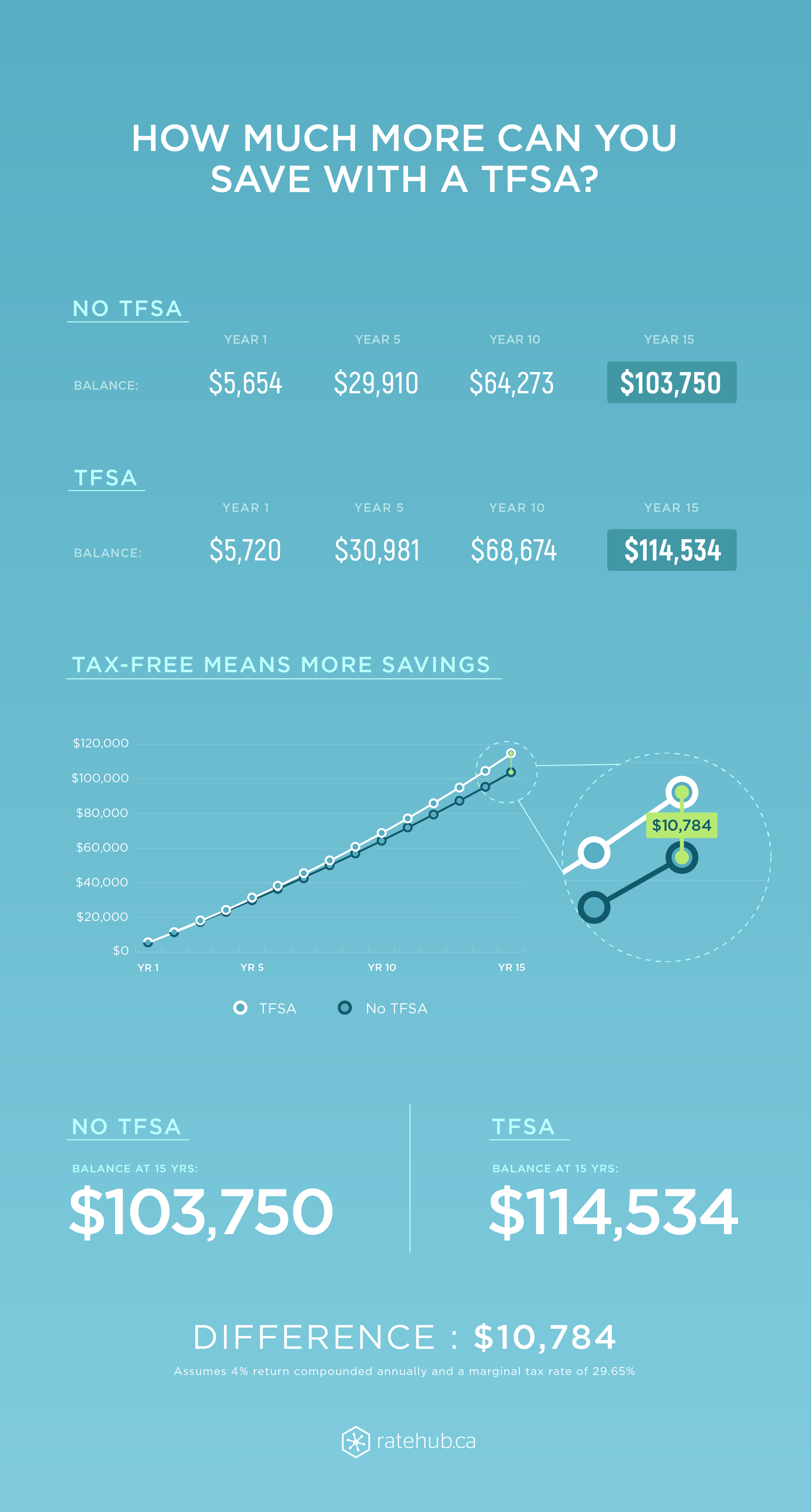[Infographic] How Much More Can You Save With a TFSA?
TFSAs are continuing to grow in popularity. The latest statistics from the Canada Revenue Agency (CRA) show there were more than 11.7 million TFSA holders in 2014—a 143% increase from 2009, the year they were introduced.
The TFSA is also much more flexible than its older cousin, the RRSP. TFSA withdrawals are tax-free and they can be used for either short-term or long-term savings goals.
Like an RRSP, a TFSA is a tax-sheltered account. That means you don’t have to pay taxes on interest, capital gains, or dividends. Not having to pay tax can lead to additional savings in the future.
Let’s use the following example: You’re 30, you live in Ontario, and you contribute $5,500 a year (which also happens to be the current TFSA contribution limit) for 15 years.
If you don’t make any withdrawals over the 15-year period, the annual return is 4%, and your highest marginal tax rate is 29.65%, you’ll have $114,534 in a TFSA compared to $103,750 in a taxable or non-registered account. That’s a $10,784 difference because you don’t have to pay tax on the investment income earned in a TFSA.

Also read:
- Will the CRA Tax Your TFSA?
- Why Baby Boomers Should Use TFSAs
- What Happens if I Over-contribute to My TFSA?
Flickr: KMR Photography